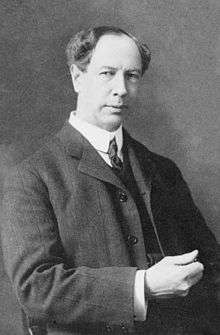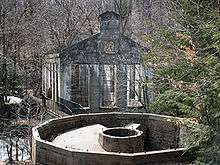Thomas Willson
| Thomas Willson | |
|---|---|
 Willson c. 1914 | |
| Born |
March 14, 1860 Princeton, Ontario, Canada West |
| Died |
December 20, 1915 (aged 55) New York City, New York, United States |
| Nationality | Canadian |
| Occupation | inventor |

Thomas Leopold "Carbide" Willson (March 14, 1860 – December 20, 1915) was a Canadian inventor.
He was born on a farm near Princeton, Ontario in 1860 and went to school in Hamilton, Ontario. By the age of 21, he had designed and patented the first electric arc lamps used in Hamilton. He moved to the United States in search of opportunities to sell his ideas.
In 1892, he discovered an economically efficient process for creating calcium carbide, which is used in the production of acetylene gas. In 1895, he sold his patent to Union Carbide.
In the same year, he married Mary Parks in California and moved back to Canada. He built a house for his mother in Woodstock, Ontario in 1895. During the years 1900 and 1901, he moved to Ottawa and opened carbide plants both in Ontario (Merritton and Ottawa) and Quebec (Shawinigan). In 1911, he founded the International Marine Signal Company to manufacture marine buoys and lighthouse beacons.
He was the first person to own a car in Ottawa.
In 1907 he built a summer house on Meech Lake in what is now Gatineau Park. (The house is now owned by the federal government, and notable for being the site of negotiations on the Meech Lake Accord). In 1911, he began experimenting with the condensation of phosphoric acid in the manufacture of fertilizers at a mill on Meech Creek within the park. Due to this venture and running out of capital, he lost nearly all of his estate to his creditor, American tobacco king J.B. "Buck" Duke.
In 1915, he died of a heart attack in New York City while trying to raise funds for a hydroelectric project in Labrador. His dream was finally realized in 1974 as the Churchill Falls project.